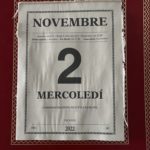 When is Roman sunrise? 6:41. And the sunset, you ask? Why, it’s at 17:05. And is the Ave Maria bell at the same time as yesterday? Yes, at 17:30.
When is Roman sunrise? 6:41. And the sunset, you ask? Why, it’s at 17:05. And is the Ave Maria bell at the same time as yesterday? Yes, at 17:30.
It is the Commemoration of all the Faithful Departed today. Today priests have their three Masses (though only one stipend). When the Masses are celebrated continuously, that is without interruption, we priests are dispensed from the Eucharistic fast for the second and third Mass. Think about it: ablutions.
The proper texts for the Requiem Masses are lovely, very rich.
The Collect from the 1st Requiem:
Fidélium, Deus, ómnium Cónditor et Redémptor: animábus famulórum famularúmque tuárum remissiónem cunctórum tríbue peccatórum; ut indulgéntiam, quam semper optavérunt, piis supplicatiónibus consequántur:
O God, Creator and Redeemer of all the faithful, grant to the souls of Your servants and handmaids the remission of all their sins, that they may obtain by our loving prayers the forgiveness which they have always desired.
Last night at Santissima Trinità dei Pellegrini, there was the display of and then presentation of the parish’s relics.
Coming into church many reliquaries were on the St Matthew altar:
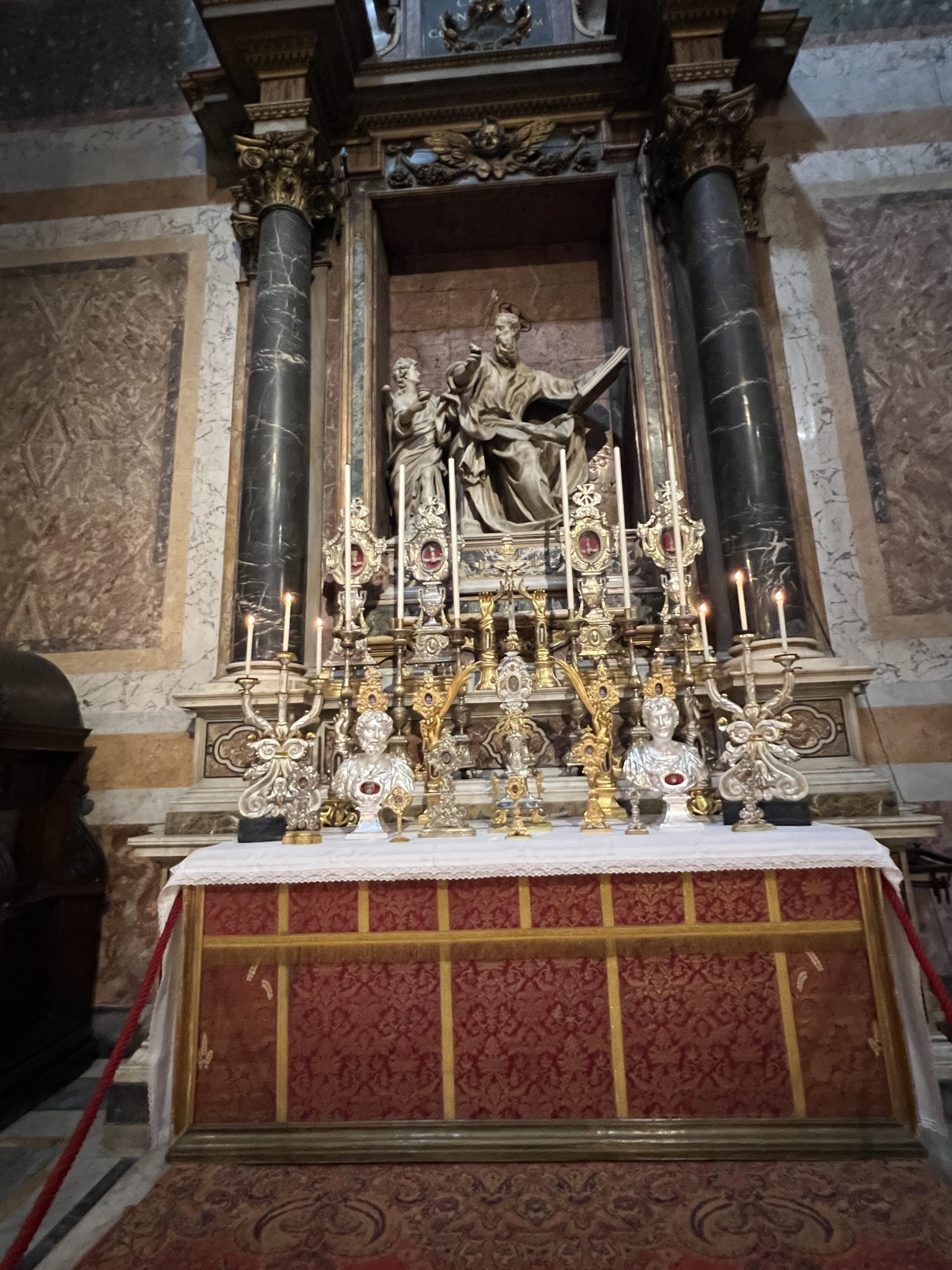
A close up of one of them.
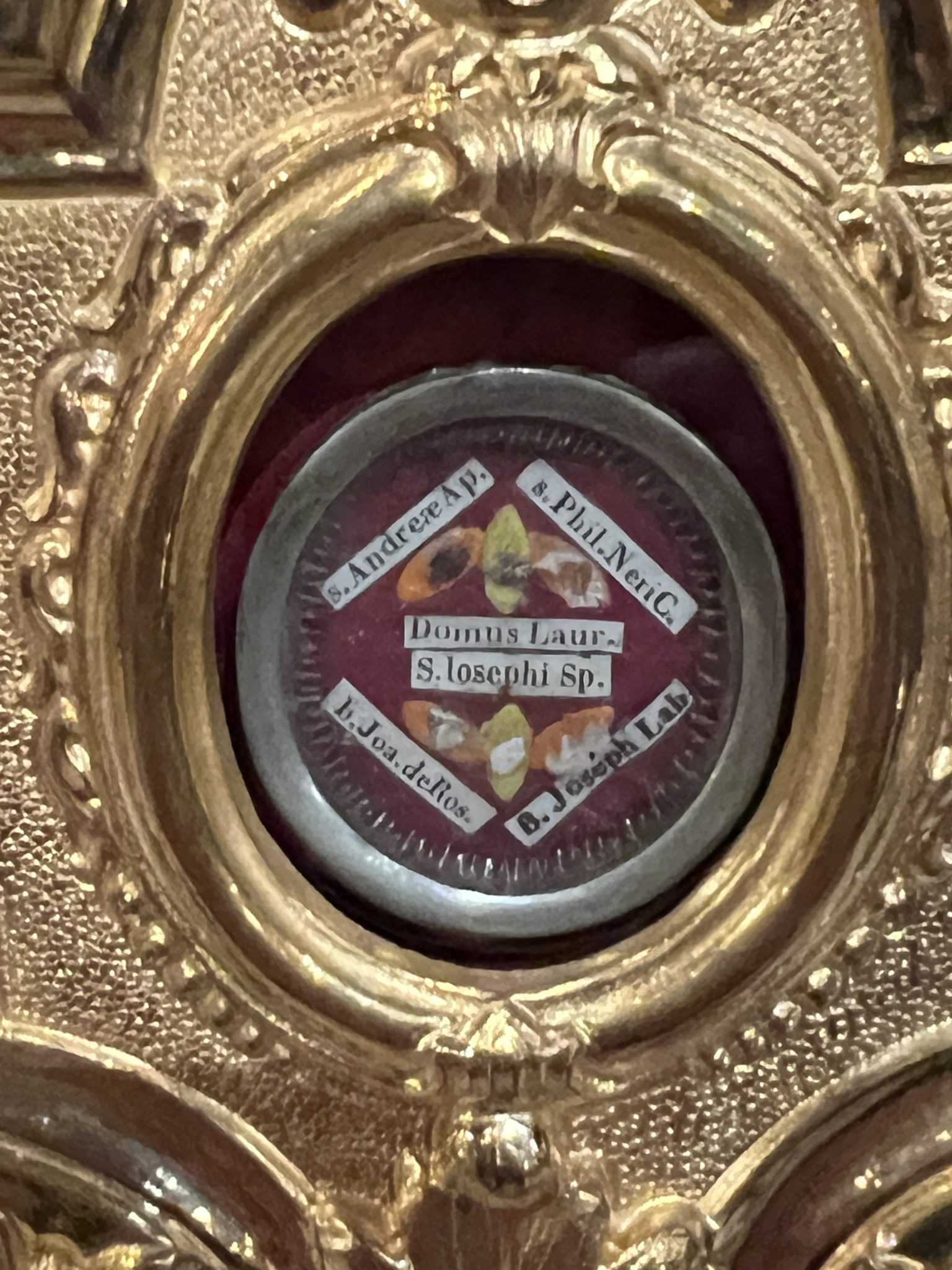
And this is how they were presented, the one just above, as a matter of fact.
Each reliquary was placed on the main altar after being presented. Here’s what they looked like last night.
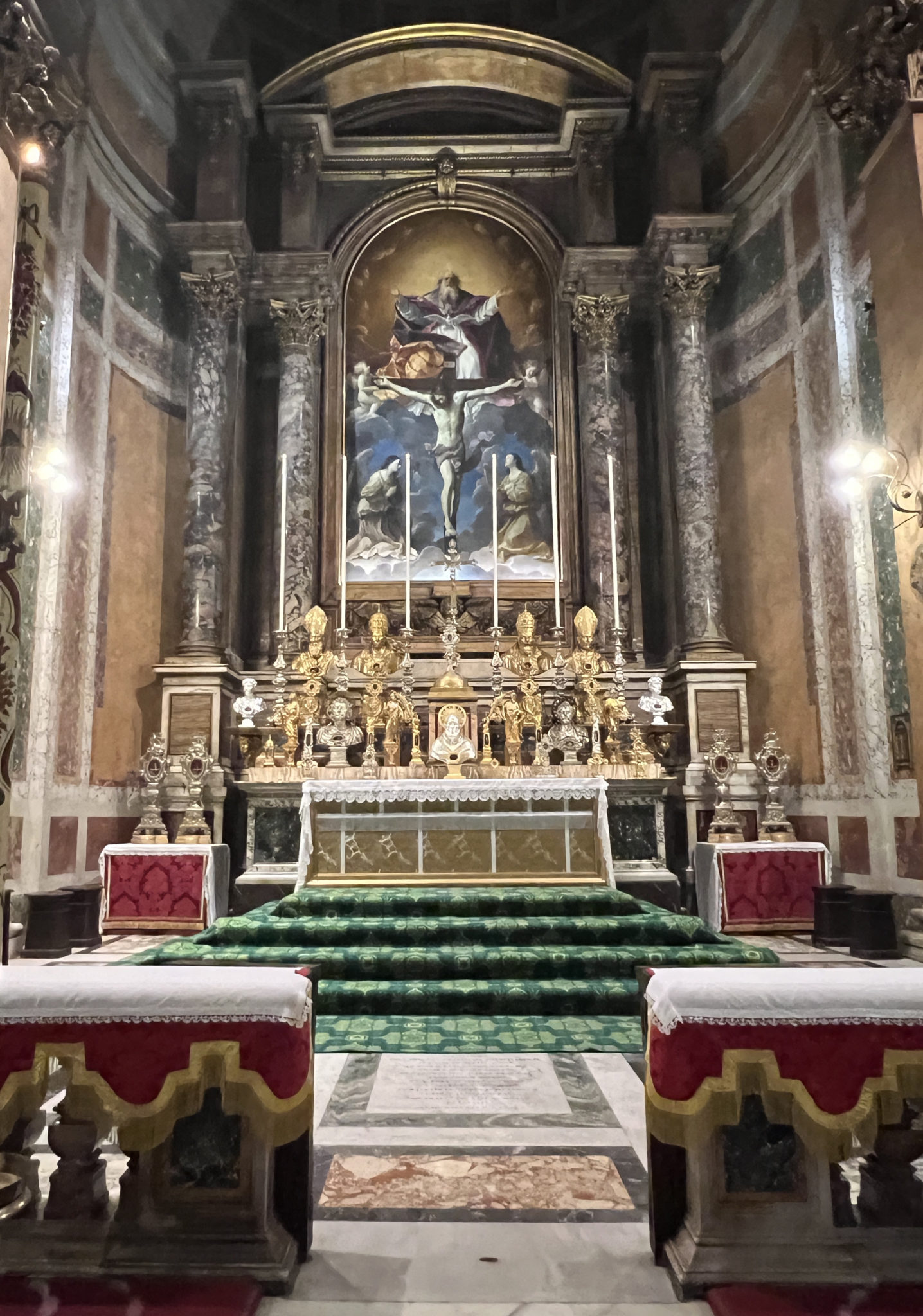
Afterwards, Vespers were sung. When it came to the Magnificat and the incensation of the altar, not only was the main altar incensed, but all the other eight side altars (used!) of the church were also solemnly incensed. That made for a rather long Magnificat, as you might imagine. This is the final altar, of St. Matthew.
You see members of the Archconfraternity that St. Philip Neri started to take care of pilgrims and the sick. They are not just into dressing up, as some of the confraternities in Rome (well.. pretty much all of those that survive). They are actively engaged in works of mercy spiritual (like catechism of children) and corporal (like feeding the poor and burying the dead).
That was last night.
Coming into church this morning, this is what it looked like.
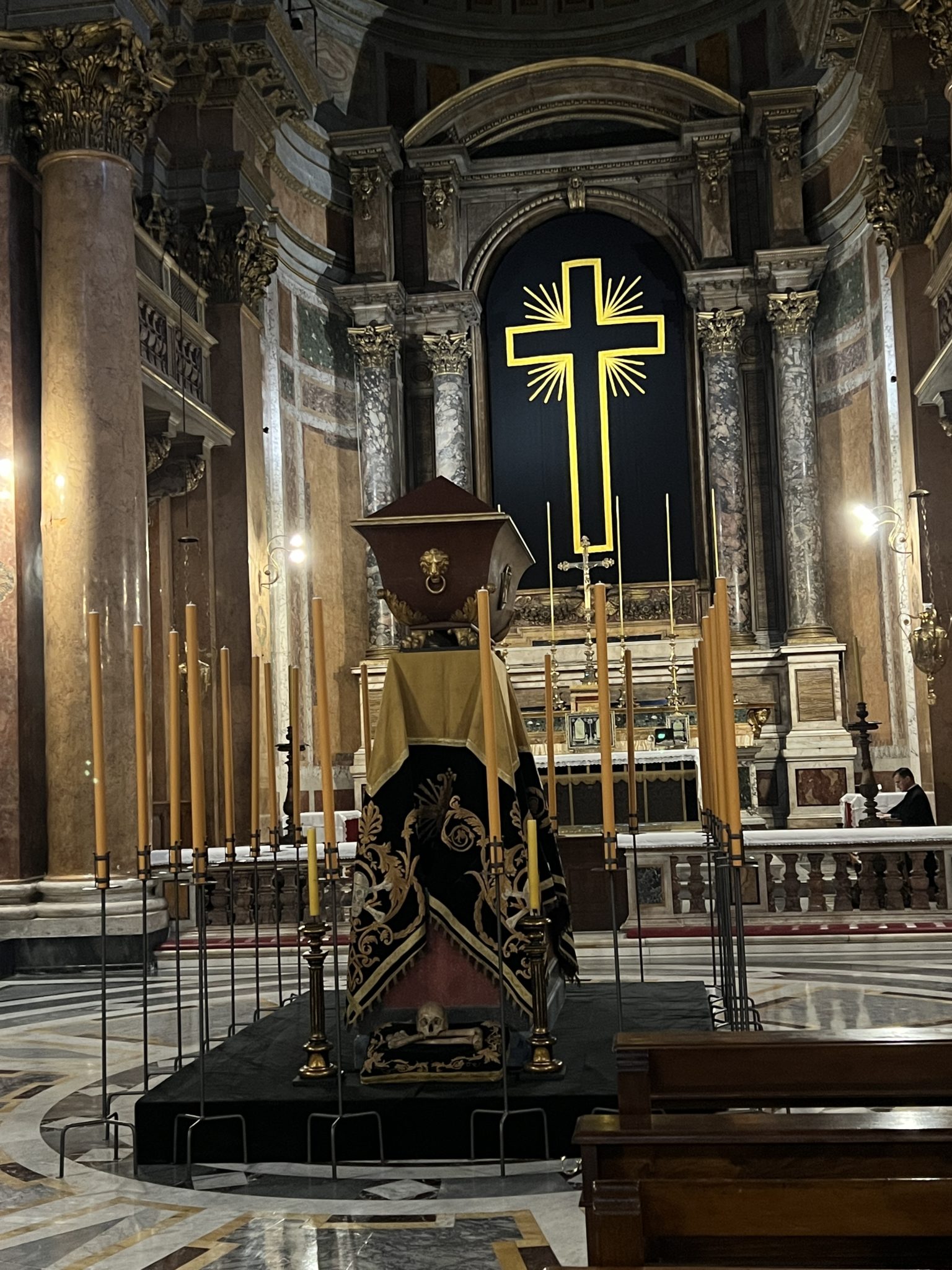
THAT took work. Think about the great love and dedication it requires to do these things, as well as know how. They are teaching the world about Roman tradition. These glimpses are important. To one degree or another they can be done in parishes.
Churches should be living buildings. The consecration is much like a baptism with exorcisms, anointings, washings, fire given, naming…
Altars should be respected and used. They aren’t shelves for plants or pictures of the wokened’s latest idol.
The Church’s calendar is a treasure, her traditions precious gifts, all part of our patrimony.
Don’t let them cheat you out of your patrimony.
Wanna hear what the Salve Regina sounds like after Mass?
Hail Holy Queen!
What about this other queen?
White has the bishop pair and dominates the f file.
Black to move.
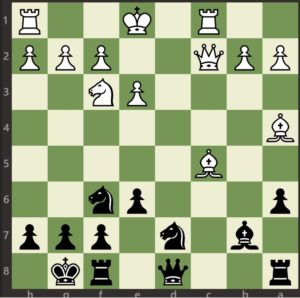
[I’ll hold your solutions in the comment queue for a while to let others work it without spoilers. It has been great to see your answers!]
Interested in learning? Try THIS.
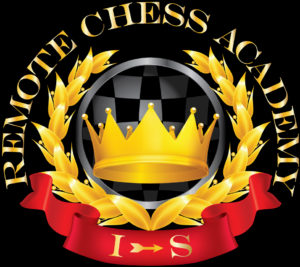
Priestly chess players, drop me a line. HERE
Please remember me when shopping online. Thanks in advance. US HERE – UK
Speaking of relics….
From a reader…
What type of prayer does a lay-person say to create a third class relic by touching an object to a second class relic?
Nothing. There is no prayer involved. Your intention is enough.
And for those who don’t know, a 1st class relic is from the body of the blessed or saint, such as bone, flesh, hair, or perhaps the “ash”. Sometimes bodies simply disintegrate into something that is like ashes. Thus, “ashes to ashes, dust to dust”.
A 2nd class relic would be from a possession of the blessed or saint, such has a habit or clothing or a piece therefore.
A 3rd class relic is something that has had contact with a 1st or 2nd class relic. It is a bit remote, but we Catholic believe in intermediary intercession all the time, right?
BTW… last night, my Rosary was touched to each and every relic involved.


































Reading this makes me emotional. I feel like my birthright/my heritage has been withheld from me as I strive to live a Catholic life. How much seeing and participating in the Church calendar would aid me!
1…Nxc5
2.Qxc5 Qa4+ wins a piece.
1. …Nxc5
If 2. Qxc5, the queen is lost.
We have, I believe, St. Odilo, fifth abbot of Cluny, to thank for today’s wonderful celebrations. The sons of St. Benedict have given us so much.
When St. Benedict felled the sacred grove of Apollo on Monte Casino, it was more than just the destruction of another pagan shrine: it marked the departure of the Muses from Parnassus, to serve a new master. Benedictine spirituality is at the very core of western civilization.
I should finish the thought:
1. …Nxc5
2. Qxc5 Rc8
3. Qxc8 Bxc8
Neal,
Why would the Queen take the Rook at c8 in a suicide move?
Adam: Good for you for engaging. Here’s how I run it.
Why does white’s Queen take the Rook? What’s the alternative?
When black’s Knight takes white’s dark square Bishop on c5 it also threatens the remaining Bishop on a4. Thus, if the Queen doesn’t retake, then white will be down two minor pieces just like that. That’s game over, really. So, the Queen recaptures with little choice. Then the black Rook slips over to the c file to laser beam through white’s Queen to the undefended enemy Rook on c1. If the Queen moves, that Rook falls… with check. Not only that, the King is skewered by the Rook, which is eying the other enemy Rook on h1. The material loss is catastrophic. That’s why the Queen is forced to take the Knight and then the Rook on c8. It’s over anyway, but… it’s a puzzle.
A question:
Apparently, the candles are dark-yellow for Masses for the Defunct but white otherwise. Is there a specific reason, symbolic meaning etc. for this?
Ugh, I sold my position short! As the grandmaster said, when you find a good move, look for a better one. I’ve gotten lazy in my analysis.
Even worse, my queen move is just a blunder. Well, there’s always next time!
Imrahil — That’s raw beeswax color. All the other candle colors are either bleached wax or colored dyes, IIRC.
I think the color of raw beeswax can differ a bit in different areas, or maybe there are different ways of processing it… yup, reference sources say beeswax can be light yellow, dark yellow, brown, or white.
Father Z, thanks for that explanation.